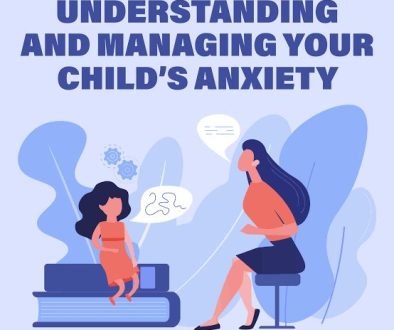Digital Detox: Benefits of Reducing Screen Time
In our technology-driven world, screens are a constant presence in daily life. Many people spend hours each day on smartphones, computers, televisions, and other digital devices. While technology offers countless benefits, including convenience, connectivity, and entertainment, excessive screen time can negatively affect physical and mental health. A “digital detox” — taking intentional breaks from screens — has gained popularity as a way to counteract these effects and restore balance. A digital detox can help improve focus, reduce stress, enhance relationships, and even improve sleep quality.
The term “digital detox” refers to a period of time spent away from digital devices to reduce stress, increase mindfulness, and reconnect with the physical world. Research shows that many people, especially younger generations, may spend more time on screens than they realize. This overuse can lead to “digital fatigue,” which affects concentration, sleep, and overall well-being. Signs that a digital detox might be beneficial include feeling anxious without your phone, finding it difficult to concentrate, or experiencing disrupted sleep due to late-night screen use.
Benefits of Reducing Screen Time
1. Improved Mental Health
Research has shown a connection between high levels of screen time and mental health concerns, such as increased stress, anxiety, and depression. Social media, in particular, can lead to feelings of inadequacy, comparison, and low self-esteem. Taking time away from screens can help people reduce these effects, allowing space to cultivate a positive self-image and focus on offline connections.
2. Better Sleep Quality
Screen exposure, especially before bedtime, can interfere with sleep. Digital screens emit blue light, which disrupts the body’s natural circadian rhythm by suppressing melatonin, the hormone responsible for sleep. Reducing screen time in the evening can improve sleep quality, allowing for deeper rest and more energy the following day.
3. Enhanced Focus and Productivity
Frequent notifications and constant digital multitasking can decrease focus and reduce productivity. Studies have shown that constant interruptions from screens impair cognitive function, making it difficult to complete tasks efficiently. A digital detox allows the brain to take a break from information overload, leading to improved concentration and more mindful work habits.
4. Increased Physical Activity
Excessive screen time often means more time spent sitting, which can contribute to a sedentary lifestyle. Reducing screen time can encourage people to engage in physical activities, whether through exercise, outdoor activities, or hobbies that involve movement. This not only benefits physical health but also supports mental well-being through the release of endorphins.
5. Stronger Interpersonal Relationships
Spending too much time on screens can affect relationships, as digital interactions may sometimes replace face-to-face conversations. Taking a break from screens can help people reconnect with family, friends, and loved ones, fostering stronger, more meaningful relationships. In-person interactions can improve empathy, communication, and a sense of connection that digital interactions may lack.
6. Reduced Eye Strain
Digital eye strain, or “computer vision syndrome,” is a common issue caused by prolonged screen time. Symptoms include headaches, blurred vision, and dry eyes. Reducing screen use can alleviate these symptoms, promoting better eye health and reducing the discomfort associated with extended screen exposure.
Practical Tips for a Digital Detox
A digital detox doesn’t necessarily mean giving up all devices indefinitely; even small changes can yield significant benefits. Here are a few strategies to try:
– Set Device-Free Zones: Designate certain areas, like the dining room or bedroom, as screen-free spaces to encourage mindful interaction and better sleep.
– Establish a No-Screen Time: Schedule specific times of day to go screen-free, such as the first hour after waking or the hour before bed.
– Use Apps to Limit Usage: Many smartphones have built-in tools to track screen time and set daily usage limits, helping you become more aware of your habits.
– Replace Screen Time with Hobbies: Explore offline activities like reading, crafting, cooking, or spending time outdoors to create a balanced routine.
– Take Short Breaks During the Day: Practice the “20-20-20” rule: every 20 minutes, look at something 20 feet away for 20 seconds to reduce eye strain.
Finding Balance with Technology
A digital detox is not about rejecting technology but rather about achieving a healthier balance between screen time and real-life activities. As technology continues to play a crucial role in modern life, learning to manage screen use mindfully can enhance mental and physical health while promoting a more fulfilling life. By making a conscious effort to reduce screen time and engage in other activities, individuals can foster a stronger sense of well-being, improve their focus, and strengthen relationships.
Conclusion
Reducing screen time through a digital detox offers a variety of mental, physical, and social benefits. By intentionally setting boundaries on digital use, individuals can restore balance, improve sleep, enhance productivity, and foster meaningful connections. As technology remains an integral part of daily life, taking the time for regular digital detoxes can help individuals maximize the positive aspects of technology while minimizing its potential drawbacks.



